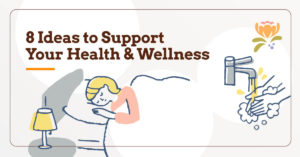As a Connecticut Home Care Agency – providing care services to seniors throughout the state for over 16 years – we know that most seniors want to stay at home as they age. Most of our clients have lived in their homes for over 40 years. Many built their homes and raised their children in them, and under no circumstances do they want to live out the remainder of their lives anywhere else. In fact, according to the nonprofit Rebuilding Together, 80% of people aged 50 and older own their own homes, and 92% of them want to stay in those homes for the long haul.
But most of the places these good folks call “home” were not designed for people 70 or 80 years old. They were designed and built for the vibrant young adults they once were. For an elderly person with poor eyesight, limited mobility, memory impairment, dementia, poor functioning, or in need of personal care assistance, their home environment may no longer be appropriate – and may even be unsafe. Many homes have second-level bedrooms and small or 1/2 baths on the first level. Most have what we consider “environmental barriers” like narrow doorways, entryway steps, or poor lighting – which all can reduce a senior’s independence and create hardships for caregivers.
Home Modifications Can Help
If you or a loved one plans to spend the Golden Years at home, here are some important things to consider:
- An Aging-in-Place Plan. Don’t wait until your 75 and being discharged from a hospital after breaking a hip to begin modifying your home. Ideally you can make incremental changes over the years as you do routine home improvements and repairs. If you need to make modifications now, this post and the resources included will help get you started.
- A Home Assessment. Every Home Modification Plan will need to start with an assessment of the home. You can do this yourself using a variety of online Checklists, or you can hire a professional to help you. Also, if you’re doing this for a loved one and not yourself, spending a day or two living in the home can provide you with amazing insights.
- The Occupants. Who will be residing in the home over the years? A couple? One person? Will there be a live-in caregiver at some point? It’s important to factor caregivers into the mix. Think about how the home environment will affect both the physical and emotional well-being of all of occupants now and into the future.
- Physical Independence & Mobility. Can the occupants get from room to room; reach doors, cabinets, plugs and switches; operate faucets, appliances, toilets, showers? Is there adequate lighting or too much glare?
- Emotional Well-Being. How does it “feel” to be in the home? Are the colors warm and soothing? Is there a lot of clutter? Is it overstimulating? Do people feel comfortable in the space? Is the home warm and inviting?
- Safety & Security. This is perhaps the most important thing to consider. There are many ways to make a home safer for seniors, from adding safety bars in showers to installing elderly monitoring systems. Download the RT-Aging-in-Place-Safe-at-Home-Checklist for a comprehensive overview of home safety items you should be aware of.
- A List. Make a list of the essential changes that need to happen in order for you or your loved one to live safely and independently and start making them asap. Or, hire a pro to help you.
Here are some things professionals will consider when performing an Aging-in-Place Assessment on a home:
- Smooth, ground level entrances without stairs
- Addition of grab bars on one or both sides of the toilet, shower entry, and around the tub
- Raised toilet seats
- Water temperature regulator
- Motion sensor faucet
- Transfer bench
- Flexible hand-held shower
- Non-skid flooring
- Emergency alert devices & home monitoring system
- Surfaces that are level, stable, firm, and slip resistant
- Wide interior doors, hallways, and alcoves with 60″ × 60″ turning space at doors and dead-ends
- Lever handles for opening doors rather than twisting knobs
- Hardware that does not require tight grasping, pinching or twisting of the wrist
- Light switches with large flat panels rather than small toggle switches
- Buttons and other controls that can be distinguished by touch
- Bright and appropriate lighting, particularly task lighting, and lots of natural light
- Contrast controls on visual output
- Clear lines of sight to reduce dependence on sound
- Ramp access to home
If you’re considering hiring a professional, make sure to use a legitimate, licensed, and knowledgeable contractor to assess the home. Safer Homes For Life is one home modification contractor in Connecticut that we can recommend. They specialize in helping Connecticut seniors stay safe and independent in their own homes.
Their staff are Certified Aging in Place Specialists and include an architect trained to create adaptable design solutions. They will take a comprehensive approach to evaluate and recommend changes that promote mobility, reduce the risk of falls, improve safety, and provide improved efficiency for care giving. We have seen their bathroom designs and they are outstanding!
Download the Building Together Aging-in-Place Safe-at-Home Checklist
References:
- http://rebuildingtogether.org/
- http://www.saferhomesforlife.com/our-services
- http://www.nolo.com/legal-encyclopedia/home-modifications-elderly-32265.html
- http://wellcomehome.iweb.bsu.edu/why.html
- http://www.princetonsenior.org/altlivingguide/adaptivetechnologyforseniors.cfm
- http://www.agingcare.com/Articles/Home-Modification-for-Senior-Friendly-Living-104573.htm
- http://en.wikipedia.org/wiki/Universal_design






